The content of the article
Starch has the form of a powder, which is characterized by white, sometimes yellow. He has no characteristic pronounced taste and smell. The material for its production are potato tubers. It is represented by one of the possible forms of carbohydrate substances that may exist in nature. The product has viscous properties, which found its application in various fields of human activity, including such as medicine, food industry, cosmetology.
Varietal affiliation
The main document according to which certain requirements are imposed on starch is GOST. The scope of this document is production when mechanical processing of potatoes is used. In accordance with this, there is a separation by variety:
Extra
If we consider such starch without the use of third-party means, we can note the presence of grains in it. Their number should not exceed 60 pieces in one square decimeter. If starch of this variety is used for medical purposes, then the indicator should be reduced to 40 grains.
Top grade
The difference is in the number of starch grains per 1 dm2. There are much more here - 280 pcs.
First grade
Its grit index is 700.
All of these types uses food production, where they act as a thickener and filler. In starch, nutritional supplements may be present that take the form of modified forms. They are officially allowed to be used in food production.
Second grade
The indicators associated with grain size for this species are not standardized. It is used for technical purposes and industrial processing. From the point of view of technical characteristics, there are two important points:
- The viscosity that starch paste has. It is determined by combining starch with water and thermal effects on the resulting composition.
- White color. This indicator is important for the textile, printing industry.
In Russia, starch was introduced by Peter I. Initially, the use concerned only potato starch. Then they learned to get it from rice, corn, and other crops.
Chemical composition
Starch undergoes hydrolysis processes, but the process will only go at high temperature and under the influence of acid. Starch powder, when added to it, has the ability to form a paste. Cold water for starch, like alcohol, is not a solvent.
Glucose is formed from starch - a source of energy.
The benefits of starch
The body easily assimilates starch. This is due to the fact that, like many other natural products, it consists of long natural carbohydrate chains. However, it is not fully digested. Part of the product remains unchanged. Thus, starch is resistant to enzymatic activity. This part of the product is called resistant starch. His work in the digestive tract takes the form of soluble fiber. It is associated with a positive effect on the body.
Under its influence, low molecular weight cholesterol is reduced, sugar is reduced, and susceptibility to the insulin hormone is increased. In some products, it is contained in two fractions simultaneously. An example is a banana. When it is immature, the resistant type prevails in it. But when it ripens, the amount of starch with a light assimilation character increases.
If the starch is heated, the portion bound by ordinary starch rises in it. Upon cooling, the proportion of resistant starch increases. The part of starch associated with resistant properties passes unhindered through all sections of the digestive tract, reaching the small intestine. However, she does not undergo any changes. Once in the colon, it becomes an excellent breeding ground for a huge number of bacteria.
In this case, many by-products are formed, including butyrate, which is essential for nourishing the cell structures of the colon. If its lack is observed, then a lot of problems arise from the large intestine, up to the development of colitis and the appearance of ulcerative formations. Butyric acid helps balance the pH of the colon. In addition, the absorption of minerals is improved, and toxins are less absorbed into the blood. Resistant starch is an excellent prophylactic that prevents the occurrence of Crohn's disease, eliminates constipation and diarrhea.
There is no need to convince anyone that foods high in starch should be included in your daily diet. This is an axiom. Starch has one “magical” property. If breakfast was eaten rich in starch, then even after lunch there would be no increase in blood sugar. This is a good enough measure to prevent an increase in plasma glucose, which is useful for diabetics.
Of course, everyone is distinguished by a strict personality in the perception of insulin. But, if you enter daily food rich in starch in your diet, then after a month the indicator of perception of this hormone can increase by 30-50%.
Starch with a small amount of consumption has a pronounced feeling of satiety. Therefore, it is recommended to use those who are on a diet for weight loss.
Starch Harm
Being a natural product, it has the least contraindications to use. But they should not be abused by those who are prone to constipation. This is due to the fact that the product has a fixing effect.
The use of starchy food before going to bed is not recommended. Better combine with vegetables. In this way, you can avoid unpleasant manifestations from the digestive tract.
Natural starch generally does no harm to the body. Its modified forms are harmful. A certain harm can be caused by a violation of the cooking technology. The use of modified starch can lead to thinning of the vascular wall. This is most relevant for the vascular apparatus of the organ of vision.
If starch, which has undergone heat treatment, is excessively consumed, this will determine the possibility of the occurrence of malignant neoplasms.
The use of starch in medicine
- It is included as a filler in the composition of medicines. If there are digestive problems, then when taken orally, it will act as an enveloping agent. With ulcerative processes in the stomach, starch jelly is used.
- Internal intake of starch leads to an acceleration of metabolic processes and a decrease in blood pressure.
- Starch is used in various dosage forms for external and internal use. If starch is poured onto a small wound surface, then the blood will stop almost instantly. When applying a bandage, this will happen no earlier than in 6-8 minutes.It was noted that starch does not cause an allergic reaction at all. In addition, after the wound heals, there is no scar left.
- If the baby has diathesis, then starch can be used as an anti-inflammatory property.
The use of starch in cosmetology
According to cosmetologists, starch takes a higher position in the competition with Botox to eliminate wrinkles. Women at home use different variations of starch masks. Their composition depends on the type of skin.
Of course, the benefits of starch as a natural product are undeniable. However, it should not be abused. All good things should be in moderation. Do not forget that although they are minimal, but still there are restrictions on the use of starch.
Video: how to make potato starch at home


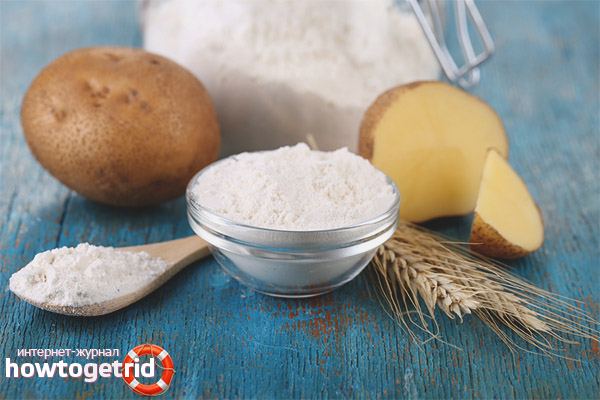
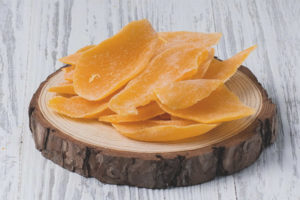
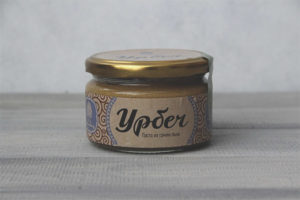

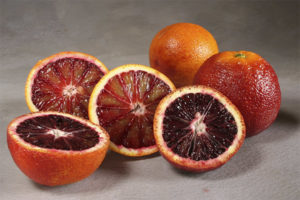
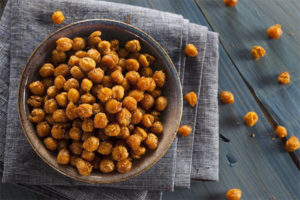
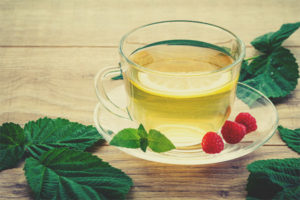
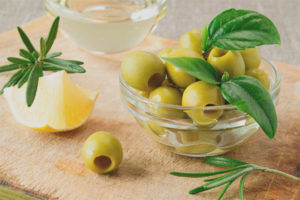
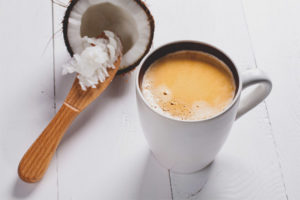
Submit